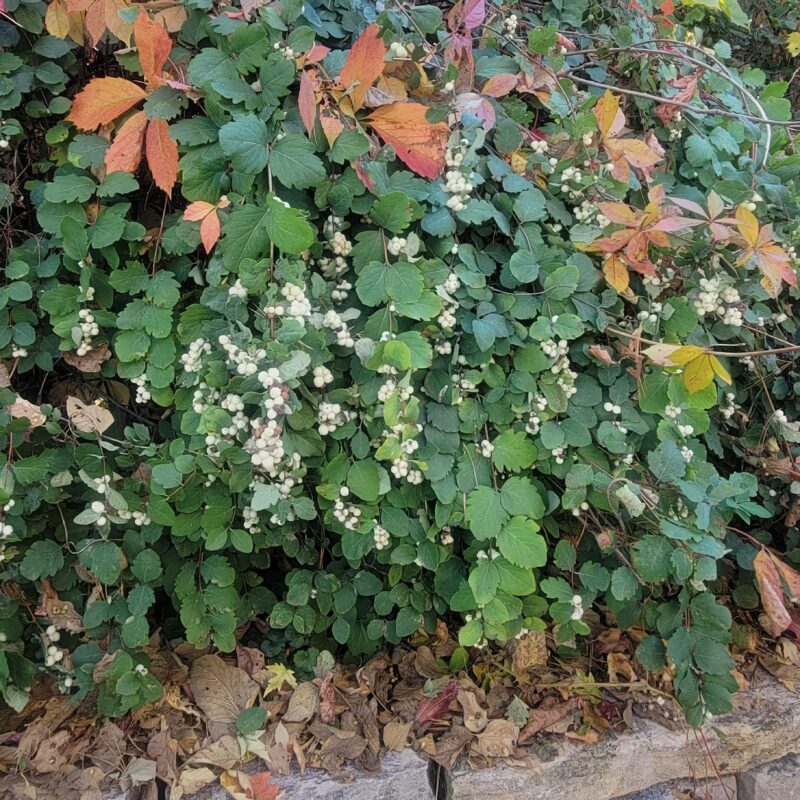Common SnowberrySymphoricarpos albus
A native, deciduous shrub with an upright, arching habit and mound that grows 3-4' tall, usually in drifts or colonies. Well suited to naturalizing in open woodland areas where it can or should be allowed to spread. It is ideal for soil stabilization and erosion control, vegetated swales, and upland buffers. It is useful for rain gardens and rock gardens, especially if the site is dry or goes dry often in shady locations. It can be included in native perennial gardens or informal hedges. It attracts birds, has showy flowers, fruit and winter interest. It has a fast rate of growth.
USDA symbol: SYAL
General Information
| Plant Type | Shrub |
|---|---|
| Height | 2 to 5 feet |
| Light Exposure | Sun, Part Sun, Shade |
| Soil Moisture | Medium, Wet |
| Bloom Color | White, Pink |

Tolerances
| Flooding / Inundation Tolerance | Moderate |
|---|---|
| General Resilience | 6 |
| Salt Tolerance | Medium |
| Stress Tolerance | Drought Tolerant, Fire Tolerant |
Pollinator Value: Very High
| Bloom Months | May to June |
|---|---|
| Pollinator Benefit | Insect Pollinated, Provides Nectar |
Project Planning
| Project Type | Boulevard, Erosion Control, Rain Garden |
|---|---|
| Coefficient of Conservatism | 8 |
| Herbivore Sensitivity | High |
| Lifespan | Perennial |
| Rate of Spread | Fast |
| Soil Stabilization | Deep |
| Vegetative Reproduction | Clonal |
Range
| County | Aitkin, Anoka, Becker, Beltrami, Carlton, Cass, Chisago, Clearwater, Cook, Crow Wing, Dakota, Fillmore, Goodhue, Hennepin, Hubbard, Isanti, Itasca, Kittson, Koochiching, Lake, Lake of the Woods, Mahnomen, Marshall, Meeker, Mille Lacs, Morrison, Norman, Olmsted, Otter Tail, Pennington, Pine, Pipestone, Polk, Ramsey, Redwood, Rice, Roseau, St. Louis, Stearns, Todd, Wabasha, Wadena, Washington, Winona, Wright |
|---|---|
| Ecoregion | Driftless Area, Lake Agassiz Plain, North Central Hardwood Forests, Northern Glaciated Plains, Northern Lakes and Forests, Northern Minnesota Wetlands, Western Cornbelt Plains |
| Approximate Eco Province | Eastern Broadleaf Forest, Laurentian Mixed Forest, Prairie Parkland, Tallgrass Aspen Parklands |
